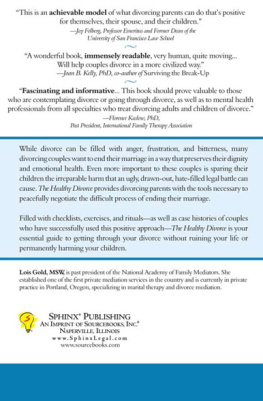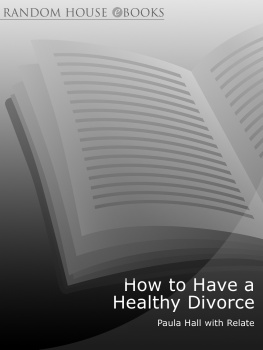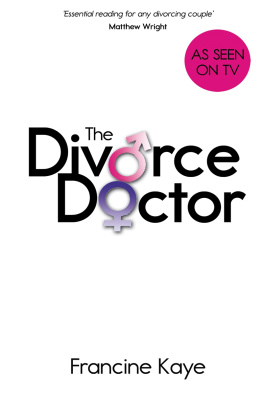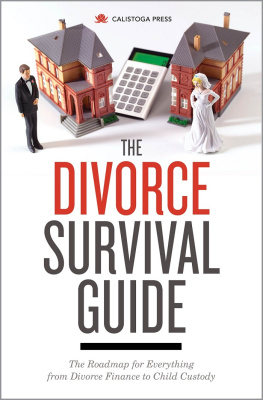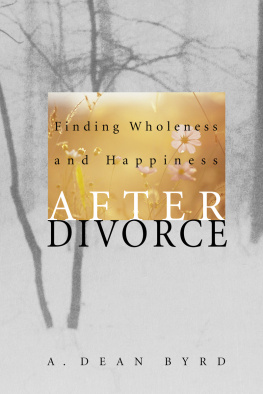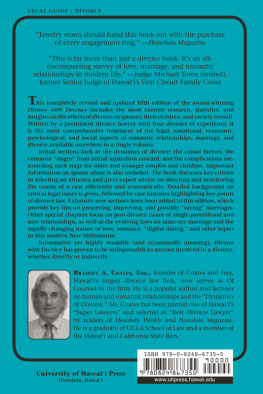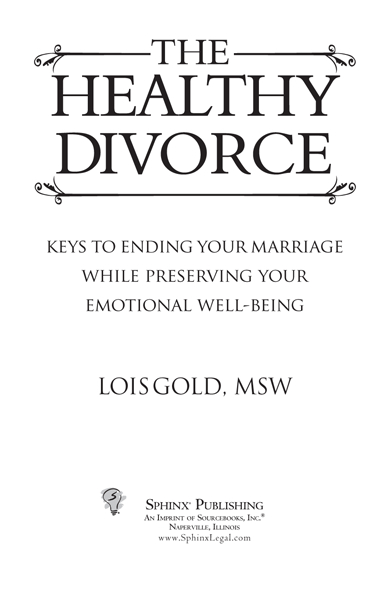
Copyright 2009 by Lois Gold
Cover and internal design 2009 by Sourcebooks, Inc.
Cover design by Dan Yeager, NuImages Design
Cover photo Jupiter Images
Sourcebooks and the colophon are registered trademarks of Sourcebooks, Inc.
All rights reserved. No part of this book may be reproduced in any form or by any electronic or mechanical means including information storage and retrieval systemsexcept in the case of brief quotations embodied in critical articles or reviewswithout permission in writing from its publisher, Sourcebooks, Inc.
This publication is designed to provide accurate and authoritative information in regard to the subject matter covered. It is sold with the understanding that the publisher is not engaged in rendering legal, accounting, or other professional service. If legal advice or other expert assistance is required, the services of a competent professional person should be sought.From a Declaration of Principles Jointly Adopted by a Committee of the American Bar Association and a Committee of Publishers and Associations
All brand names and product names used in this book are trademarks, registered trademarks, or trade names of their respective holders. Sourcebooks, Inc., is not associated with any product or vendor in this book.
Published by Sphinx Publishing, and imprint of Sourcebooks, Inc.
P.O. Box 4410, Naperville, Illinois 60567-4410
(630) 961-3900
Fax: (630) 961-2168
www.sourcebooks.com
Originally published as Between Love and Hate: A Guide to Civilized Divorce, Plenum Press, New York, 1992.
Library of Congress Cataloging-in-Publication Data
Gold, Lois.
The healthy divorce / by Lois Gold.
p. cm.
Includes bibliographical references.
1. Divorce. 2. Communication in divorce mediation. I. Title.
HQ814.G5 2009
306.89dc22
2008046041
Printed and bound in the United States of America.
VP 10 9 8 7 6 5 4 3 2 1
To the memory of my parents, Joseph and Jeanne Kane.
FOREWORD
Joan B. Kelly, PhD
I was troubled by the movie War of the Roses troubled because of the message that such hateful and destructive behavior was the American way for divorcing couples; troubled because the print media made much of this poisonous manner of ending a marriage; troubled because it is evident, from my own and others' research, and from my mediation and psychotherapy experience, that the majority of divorcing spouses do not act like the protagonists in this movie; troubled because mediation clients who are working hard at divorcing with some restraint and dignity despite their anger occasionally ask me, with bewilderment, if they are abnormal in their attempt to divorce with civility. What was most sad about War of the Roses , finally, was that it vividly expressed out society's continuing acceptance, if not outright encouragement, of the hostile divorce.
The Healthy Divorce is a powerful antidote to that message. It appears at a perfect time. We have learned much in the past decade about men and women whose marriages ended in divorce. Research has not supported the common believe that all divorcing men and women have extreme conflict, want revenge, can't cooperate about their children, and wish the other dead. This extreme stereotype, perpetuated by attorneys, judges, and the media, applies to perhaps 20 percent to 25 percent of divorcing individuals. Because of their intense distress and repeated destructive behavior, this minority commands the lion's share of society's attention and a disproportionate amount of the court's resources. It is self-defeating for our society to continue to view this group as the norm, because it deters needed change within the legal system, among family and friends, and within individuals.
More positive for the future of our families is evidence that the majority of separating parents do have some residual ability to communicate and cooperate about their children. They are moderately angry at their spouse but not consumed with hatred. And two years after the divorce the number of parents reporting cooperation about their children increases and the number of spouses reporting high levels of anger and difficulty in communicating declines.
What we have come to understand is that couples divorce for very different reasons. Not all of those reasons are associated with high anger levels, destructive conflicts, and punitive behaviors. An increasingly large group of American men and women divorce because they have gradually grown apart, love and intimacy giving way over the years to indifference. They do not divorce with great anger but, more often, in sadness, and they do not wish the other spouse harm. They seek divorce agreements that seem fair and supportive of each other's and their children's needs.
Other men and women divorce for reasons of serious lifestyle or value differences or because of the mental illness or substance abuse of a spouse or because there has been emotional or physical abuse and violence. There is more anger and conflict in these divorces, and considerably less ability to communicate, but there is no common yardstick of anger and volatility that applies to these divorces either. Some are extremely combative, falling into that extreme group that will require continuing legal intervention; others are much less so.
Among all of these groups of divorcing men and women are those who seek to divorce with less rancor and wish for the skills, a different decision-making forum, and the family's or community's encouragement to divorce in a way that allows them to preserve some dignity and self-esteem and that protects their children from unnecessary risk and harm.
The Healthy Divorce is a wonderful book. Immensely readable, very human, at times quite moving, it is packed with information that will help couples divorce in a more civilized way. It is an excellent resource as well for mediators, psychotherapists, and attorneys who assist divorcing couples. Lois Gold has managed the difficult task of integrating diverse fields of knowledge and expertise, including family systems theory and practice, communication skills, negotiation theory and mediation concepts and skills, research on divorcing adults and children, and clinical observation. This book could have been three books, each quite separate, focusing on the adult process of disengaging from marriage and moving toward healing, parenting during and after divorce, and preparing for and successfully mediating divorce agreements. It is extremely helpful for the reader experiencing the bewildering facets of divorce to have these difficult processes combined in a way that mirrors their reality.
The Healthy Divorce stands out among a large number of books available for divorcing men and women. One of the things that distinguished it from others is the extent to which readers are given genuine help in learning about and beginning the process of separating their behavior from their strong feelings. A wide range of exercises and self-evaluation tools are provided for the reader to take multiple steps toward achieving a civilized divorce: checklists, written and visualization exercises, brief questionnaires, key pointers, practical advice, sample letters, and symbolic gestures and ritualseach is intended to promote more rational thinking, more effective action, more enlightened self-interest, and, ultimately, healing and a moving forward.
The Healthy Divorce has charted the high road. The book invites divorcing spouses to consciously choose a better course of action, explains why it is in their self-interest to do so, and provides the tools necessary to achieve the goals of civility and dignity. The author continually acknowledges the powerful and normal feelings of anger, of wanting to hit back, of wanting to flee from interaction, of wanting to embroil the children in loyalty conflicts. The pain that divorce parties experience is never given short shrift, but that pain is set within a broader perspective of what the individual may gain in the longer term. Healthy divorces increase and preserve self-esteem, empower the participants, promote a better adjustment for children and adults, and enable parents to retain or improve their working partnership on behalf of the children.
Next page
